Lada: Jump Over Fire For Goddess Of Beauty, Love, And Marriage In Slavic Mythology
A. Sutherland - AncientPages.com - Ancient belief in Lada, a goddess of beauty, love, and fertility, was widespread in the Baltic and Slavic regions of Europe.
Lada - a goddess in Slavic ancient beliefs. Image credit: Max presnyakov - CC BY-SA 3.0
Lada and her male counterpart, Lado, are usually referred to together in songs related to wedding ceremonies and activities such as planting and harvesting, accompanied by the Sun, grain, and water.
Sometimes as multiple deities, Lada and Lado were considered to be divine twins or a mother goddess and her son. To the ancient Slavs, the name ‘Lada’ was related to the original goddess of love and the entire order of life, where everything exists in perfect harmony.
Ancient Slavic people used to say symbolically "Lada" when they decided on some important agreements, business, important daily events, or baked pancakes in the spring to honor the reviving of life, plants, and the whole nature. During such events, people sang: sang: Bless, mother, Oh, mother Lada, mother… She was approached with prayers and requests (mostly in spring and summer - the time when nature wakes up from hibernation).
The Slavs believed the goddess Lada was Svarog's wife. In other versions, the god Perun was her husband.
It was believed that any place Lada visited was always warm and comfortable, a home-like place. Usually, she was the mother of all months of the year—Lada—depicted as a woman in the prime of life and full-bodied, a symbol of mature motherhood.
Lada was a young, beautiful girl with long golden hair decorated with pearls in other appearances. A crown wreathed in pink flowers adorned her head, and the goddess seemed to shine. The image of this goddess was often carved out on stones by ancient warriors, who believed that Lada protected their lives and would save them from the enemy.
Lada's symbol is a white swan, which symbolizes purity, loyalty, and mutual understanding. This goddess was designated on amulets with a circle inside, placed in an inverted triangle. The circle represents the entire universe, and the triangle is its center, its heart.
Some scholars have suggested that Lada and Lado are not the names of deities but rather refrain in songs and poetry. Others suggested ‘Lada’ could be related to the Russian word: ‘Lad’ – peace, harmony, union.
However, many songs and historical chronicles provide evidence for a cult of worship, which is historically attested in Russia during springtime fertility rites and in Polish church prohibitions on pagan rituals. Generally, the goddess Lada was known to many European nations, where one ritual—jumping over the fire—was performed in her honor. Its purpose was to ensure fertility and protect people and cattle from evil powers. Offerings to the goddess included sweet honey, beautiful flowers, and ripe liquid berries.
Updated on March 19, 2024
Written by – A. Sutherland AncientPages.com Staff Writer
Copyright © AncientPages.com All rights reserved. This material may not be published, broadcast, rewritten or redistributed in whole or part without the express written permission of AncientPages.com
Expand for referencesReferences:
Kononenko N. Slavic Folklore
Dixon-Kennedy M. Encyclopedia of Russian & Slavic Myth and Legend
More From Ancient Pages
-
 5 Lessons From Ancient Civilizations For Keeping Homes Cool In Hot, Dry Climates
Featured Stories | Sep 16, 2024
5 Lessons From Ancient Civilizations For Keeping Homes Cool In Hot, Dry Climates
Featured Stories | Sep 16, 2024 -
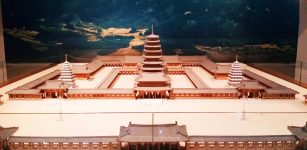 Mireuksa Pagoda: Largest And One Of The Oldest Of Korean Pagodas
Archaeology | Jan 1, 2016
Mireuksa Pagoda: Largest And One Of The Oldest Of Korean Pagodas
Archaeology | Jan 1, 2016 -
 Ancient Oral History Of Lake Babine First Nation Confirmed By Archaeologists
Archaeology | Jan 29, 2019
Ancient Oral History Of Lake Babine First Nation Confirmed By Archaeologists
Archaeology | Jan 29, 2019 -
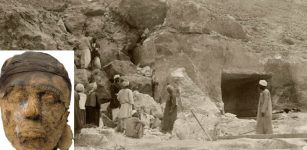 Mystery Of Egyptian Tomb 10A And The Mummy’s Head – A 4,000-Year-Old Crime
Featured Stories | Apr 27, 2022
Mystery Of Egyptian Tomb 10A And The Mummy’s Head – A 4,000-Year-Old Crime
Featured Stories | Apr 27, 2022 -
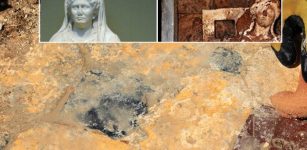 Sun Disk Unearthed On 3,500-Year-Old Rock Altar In Thracian Settlement, Edirne, NW Turkey
Archaeology | Sep 26, 2020
Sun Disk Unearthed On 3,500-Year-Old Rock Altar In Thracian Settlement, Edirne, NW Turkey
Archaeology | Sep 26, 2020 -
 Walls Of Lugo: Finest Example Of Late Roman Fortifications – Stands The Test Of Time
Featured Stories | Sep 22, 2022
Walls Of Lugo: Finest Example Of Late Roman Fortifications – Stands The Test Of Time
Featured Stories | Sep 22, 2022 -
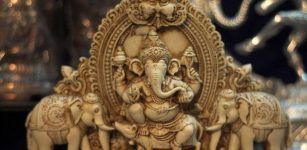 Ganesha: Elephant-Headed God Of Knowledge, Learning, Literature And Scribe Of The Mahabharata
Featured Stories | Aug 17, 2016
Ganesha: Elephant-Headed God Of Knowledge, Learning, Literature And Scribe Of The Mahabharata
Featured Stories | Aug 17, 2016 -
 Rare 2000-Year-Old Celtic Sword Unearthed In East Bohemia
Archaeology | Sep 15, 2020
Rare 2000-Year-Old Celtic Sword Unearthed In East Bohemia
Archaeology | Sep 15, 2020 -
 Advanced Technology Of The Ancients: Artificial Platforms Of Mighty Nan Madol
Civilizations | Sep 14, 2018
Advanced Technology Of The Ancients: Artificial Platforms Of Mighty Nan Madol
Civilizations | Sep 14, 2018 -
 On This Day In History: Famous American Author Edgar Allan Poe Found Dying – On Oct 3, 1849
News | Oct 3, 2016
On This Day In History: Famous American Author Edgar Allan Poe Found Dying – On Oct 3, 1849
News | Oct 3, 2016 -
 What Is The History Of Pancakes?
Ancient History Facts | Mar 7, 2024
What Is The History Of Pancakes?
Ancient History Facts | Mar 7, 2024 -
 Ancient Skulls From Ukraine Reveal Early Modern Humans Came From The East
Archaeology | Nov 9, 2023
Ancient Skulls From Ukraine Reveal Early Modern Humans Came From The East
Archaeology | Nov 9, 2023 -
 Did An Ancient Supernova Force Humans To Walk Upright?
Human Beginnings | Oct 24, 2019
Did An Ancient Supernova Force Humans To Walk Upright?
Human Beginnings | Oct 24, 2019 -
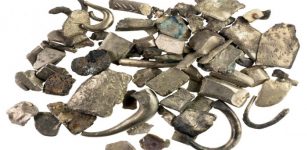 Hacksilber Hoard Dated To 11th Century BC: Eastern Mediterranean Silver Trade Reconstructed
Archaeology | Jul 5, 2021
Hacksilber Hoard Dated To 11th Century BC: Eastern Mediterranean Silver Trade Reconstructed
Archaeology | Jul 5, 2021 -
 DNA Reveals Unique Ancestry Of Inhabitants Of The Angolan Namib Desert
DNA | Oct 3, 2023
DNA Reveals Unique Ancestry Of Inhabitants Of The Angolan Namib Desert
DNA | Oct 3, 2023 -
 Brilliant Prehistoric Cave Paintings Of Lascaux – Who Were Their Unknown Creators?
Civilizations | Jun 2, 2014
Brilliant Prehistoric Cave Paintings Of Lascaux – Who Were Their Unknown Creators?
Civilizations | Jun 2, 2014 -
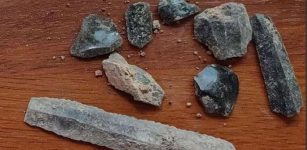 Tracking Prehistoric Relations With AI From The Middle Stone Age To Antiquity
Archaeology | Jul 14, 2023
Tracking Prehistoric Relations With AI From The Middle Stone Age To Antiquity
Archaeology | Jul 14, 2023 -
 How Ancient Seascapes Shaped The Genetic Structure Of European Populations
Archaeology | May 20, 2022
How Ancient Seascapes Shaped The Genetic Structure Of European Populations
Archaeology | May 20, 2022 -
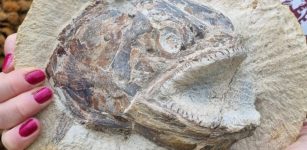 183-Million-Year-Old Fossils: Jurassic Marine World In A Farmer’s Field
Fossils | Jul 31, 2022
183-Million-Year-Old Fossils: Jurassic Marine World In A Farmer’s Field
Fossils | Jul 31, 2022 -
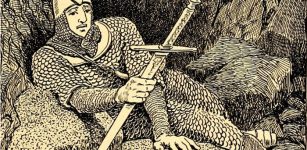 Durendal – Magical Sword Of Knight Roland That Cut Stone Boulders With A Single Strike
Featured Stories | Jan 19, 2022
Durendal – Magical Sword Of Knight Roland That Cut Stone Boulders With A Single Strike
Featured Stories | Jan 19, 2022

